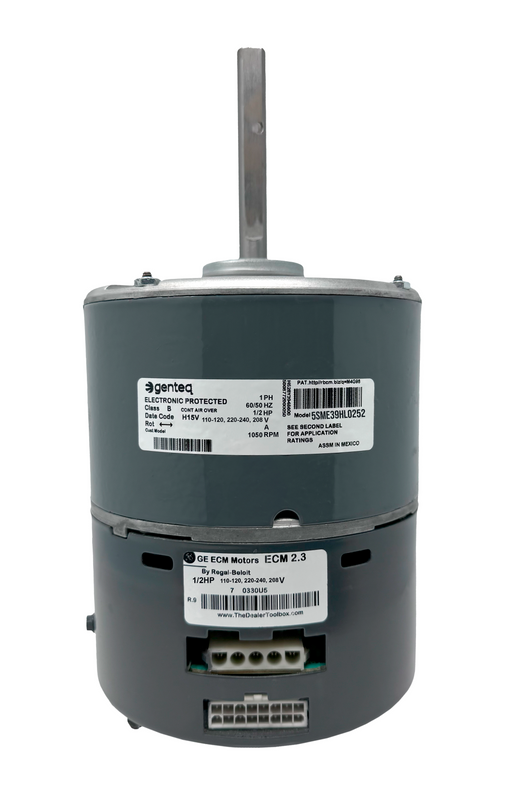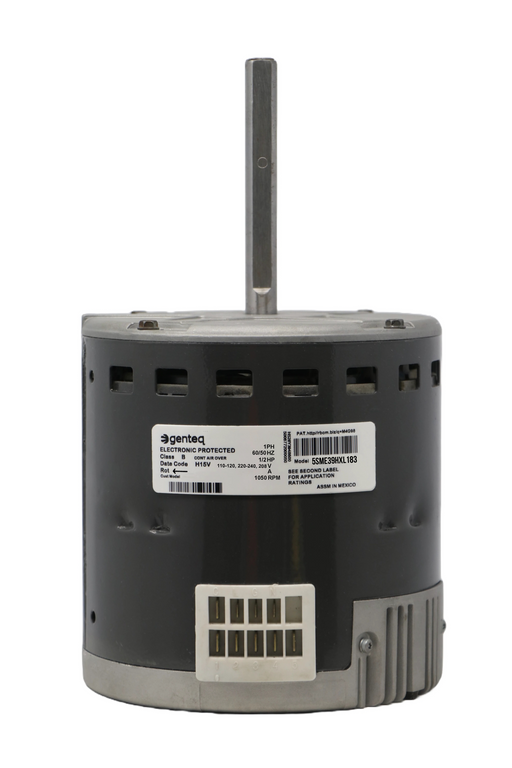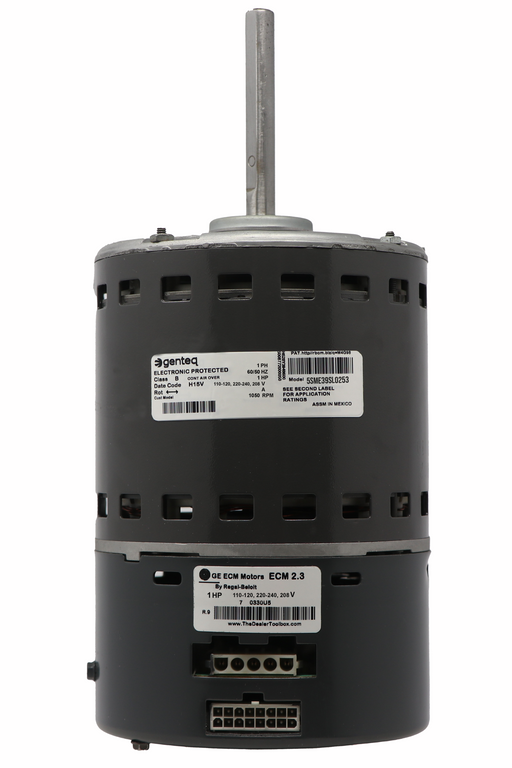(813) 440-8108

HVAC Marketing Tips That Actually Work in 2025
You’ve poured heart and sweat into your HVAC business. Every technician’s call‑out, every perfectly installed system, every satisfied homeowner… all of it should be building your reputation and your bottom line. Yet too often we see stellar HVAC companies struggle with a disconnect between service excellence and consistent lead flow. That’s where smart marketing comes in—targeted strategies that help your business not just survive, but thrive.
In this article, you’ll find actionable HVAC marketing tips for 2025 that reflect where the industry is now, where it’s headed, and how you can stay ahead of the curve.
Why HVAC Marketing in 2025 Requires a New Approach
Long‑standing methods still carry value, but the digital landscape and consumer expectations are shifting. A recent guide notes that today’s HVAC customer begins their journey online, often on mobile, and expects trust, transparency, responsiveness.
Meanwhile the industry itself is facing higher competition, greater consolidation, and digital disruption.
If you rely solely on yard signs, coupons, or sporadic referrals, you may be leaving a lot of business on the table. The right marketing system bridges the gap between your service excellence and the customers who need you. Let’s dig into the strategies that work.
Remanufactured Motor by United HVAC Motors
2 Year Replacement Warranty (Terms Apply)
Plug n Play - 100% Programmed
Match your Motor Model N...
Remanufactured Motor by United HVAC Motors
2 Year Replacement Warranty (Terms Apply)
Plug n Play - 100% Programmed
Match your Motor Model N...
5SME39HL0252 GE Genteq Blower Motor ECM 2.3 1/2 HP
5SME39HXL015A GE Genteq Blower Motor ECM X13 1/2 HP
Nail Your Online Foundation: Websites, Local SEO & Reputation
Your website isn’t just a digital brochure—it’s a lead‑generation engine. First, it must be mobile‑friendly, fast, and built around conversion. One industry guide stresses that a site which looks good but doesn’t convert or isn’t built for search is a waste.
Next, local search matters more than ever. When a homeowner types “AC repair near me” or “furnace tune‑up [city]”, you want to show up. That means optimizing your service‑area pages, using location‑based keywords, keeping your NAP (name‑address‑phone) consistent, and claiming your Google Business Profile.
Finally, your online reputation is gold. Reviews, timely responses, and showcasing real work (photos/videos) build trust. One branding article points out that a strong reputation is among the most valuable assets you have in HVAC.
Practical steps
-
Make sure your website has separate pages for each service (e.g., “heat pump installation [city]”).
-
Verify your Google Business Profile, include accurate hours, photos, service areas.
-
Ask recent customers for reviews and respond to them (both positive and negative).
-
Ensure your website is secure (HTTPS), loads quickly, and is mobile‑optimized.
Smart Paid & Organic Lead Generation Strategies
With your foundation in place, you can layer in both organic and paid strategies to drive consistent leads.
Organic (Long‑term)
Content marketing still matters. Blogging about common questions (“why is my furnace making noise”, “when to replace your AC unit”) helps you rank, builds trust, and brings in traffic over time.
Geo‑targeted landing pages matter. A tactic discussed on Reddit noted how scalable service‑location pages helped HVAC companies capture high‑intent traffic.
Paid (Faster results)
You can’t ignore paid search and ads if you want immediate leads. Google Search Ads and Local Services Ads (LSAs) are especially effective for high‑intent searchers.
Retargeting and social ads can keep your brand front‑of‑mind and help nurture leads. For example, video testimonials or before/after visuals on Meta (Facebook/Instagram) or even TikTok work in today’s market.
Budget & measurement
Having a clear budget and tracking the ROI of each campaign is critical. One guide recommends HVAC companies allocate roughly 10‑20 % of revenue toward marketing if they want to grow. Use call‑tracking, lead attribution, and monthly reviews. If you can’t track where leads come from, you’re flying blind.
Branding, Positioning & Customer Experience
Marketing isn’t just about getting noticed—it’s about making your brand memorable and trustworthy. In 2025, more than ever, homeowners look for professionalism, reliability, and a personal brand story.
One branding resource outlines seven “secrets” for HVAC companies: consistent visual identity, strong online visibility, positive reputation, and clear company values. Rapid Site
How to apply it
-
Audit your brand’s look: uniform colors/fonts on your website, social, vehicles, uniforms.
-
Tell your story: Why did you start the company? What values drive your team? Use that narrative on your about page, social posts, and videos.
-
Showcase the experience: share behind‑the‑scenes photos, tech spotlights, customer success stories.
-
Deliver consistently: from the first call to invoicing, every touch‑point should reflect your brand promise.
When customers see the same brand personality in their search, in your truck, on your uniform, they develop familiarity and trust—and that increases conversions.
Referral & Community‑Driven Growth
Often overlooked, referrals and community engagement are among the highest‑ROI marketing tactics. While digital is essential, HVAC companies that build local relationships, trigger word‑of‑mouth, and layer incentives for referrals will outperform many.
Because the industry is more competitive, one Reddit thread emphasized the importance of building referral systems and partnerships (with realtors, hardware stores, property managers). Reddit
Practical tactics for referral growth
-
Create a referral program giving existing customers a small discount or bonus when they refer a friend or neighbour who books service.
-
Partner with real estate agents, property managers, or local builders—offer them special deals or co‑branded marketing materials.
-
Sponsor local events or charities—it builds goodwill, visibility, and local trust.
-
Send seasonal check‑in emails or postcards to past clients reminding them you’re here for tune‑ups, not just emergencies.
Leveraging Data, Automation & Technology
The biggest brands aren’t just spending ad dollars—they’re measuring everything. And in 2025, HVAC marketing is increasingly data‑driven.
One guide describes how digital strategies for HVAC contractors include retargeting, tracking cost‑per‑lead, booking conversions, and automation of follow‑up. Propellant Media
Technology you should use
-
Call‑tracking software: know which ad/channel produced the inbound call so you can evaluate ROI.
-
CRM/email automation: Segment your customers (e.g., new homeowner, equipment >10 years old, past tune‑up only) and send targeted messages.
-
Booking/forms on your site: simplify the process, reduce friction, let customers schedule service online.
-
Analytics dashboard: Monitor where leads come from, cost per lead, cost per job, and job‑value metrics so you can refine campaigns.
Without data you’re essentially making educated guesses. With measurement you can scale what works and eliminate what doesn’t.
Tactical Timing & Seasonal Strategy
The HVAC business is cyclical—summer spikes for AC and winter for heating—but smart marketing lets you smooth out those peaks and generate leads year‑round.
In 2025, one key trend: contractors who build marketing systems that work in the “off‑season” gain a competitive edge.
Timing tactics
-
Run “pre‑season” campaigns in spring (“get your AC ready for summer”) or autumn (“furnace tune‑up before winter”) to capture early bookings.
-
Use content marketing year‑round (tips, system lifespan, upgrade advice) so you’re top‑of‑mind when the sudden breakdown happens.
-
Retarget past leads/customers who booked in previous years—send maintenance reminders or equipment upgrade offers.
-
Maintain your paid campaigns even in quieter periods—but shift ad messaging (e.g., from emergency repair to system optimization or energy savings).
Why Many HVAC Marketing Programs Fail (And How to Fix Them)
It’s worth acknowledging why some HVAC companies invest in marketing and still see minimal return. Key pitfalls include: inconsistent implementation, lack of tracking, churning through tactics instead of systems, and using generic marketing without HVAC specialization.
A review of HVAC‑focused marketing agencies emphasises that understanding the industry is essential: a generic “one‑size‑fits‑all” marketing firm often doesn’t move the needle for HVAC.
Fixes to these common issues
-
Commit for the long‑haul: SEO and brand building take time. Don’t give up after two months.
-
Use HVAC‑specific tactics: your buyer’s mindset, the seasonality, and local service nature require tailored strategy—not broad B2B marketing hype.
-
Track everything: cost per lead, cost per booking, job value, conversion rates. If you can’t measure, you can’t improve.
-
Choose a partner (or build in‑house) who understands your business model. That’s where agencies like The HVAC SEO Agency come in—they’re singularly focused on HVAC growth, and understands your language and KPIs.
Your Action Plan for 2025
If you’re ready to make 2025 your breakthrough year, here are five starting moves you can take this week:
-
Audit your website for speed, mobile‑friendliness, and conversion triggers (click‑to‑call, form).
-
Update your Google Business Profile and ask 5 recent customers for reviews this month.
-
Review your ad spend last season: which campaigns produced bookings? Double down there, cut what didn’t work.
-
Build or refresh a referral program that rewards past customers and local partners for introductions.
-
Set up tracking dashboards (calls, leads, booked jobs, cost per job) and schedule a monthly review.
When you implement these actions, you’re not just hoping leads will come—you’re engineering them. And when you connect that system to your service excellence, the growth becomes predictable.
Summary
There’s a lot of noise out there about what works in HVAC marketing. The truth is simpler: you need a strong foundation, smart tactics tuned for your industry, consistent measurement, and a commitment to brand and trust.
5SME39HXL183 GE Genteq Blower Motor ECM X13 1/2 HP
Remanufactured Motor by United HVAC Motors 2 Year Replacement Warranty (Terms Apply) Plug n Play - 100% Programmed Match your Motor Model N...
View full details5SME39SL0253 GE Genteq Blower Motor ECM 2.3 1 HP
Remanufactured Motor by United HVAC Motors 2 Year Replacement Warranty (Terms Apply) Plug n Play - 100% Programmed Match your Motor Model N...
View full details





